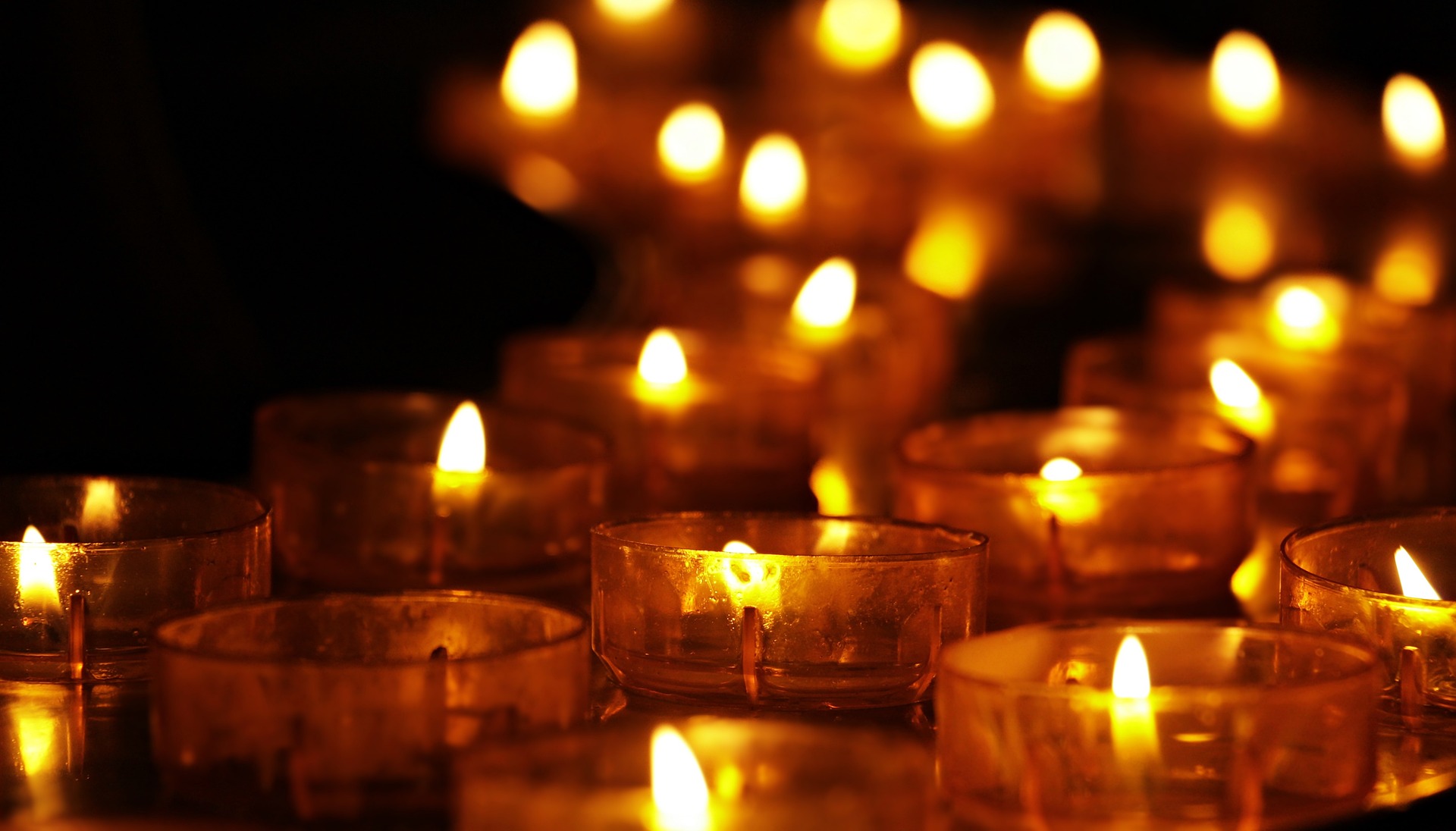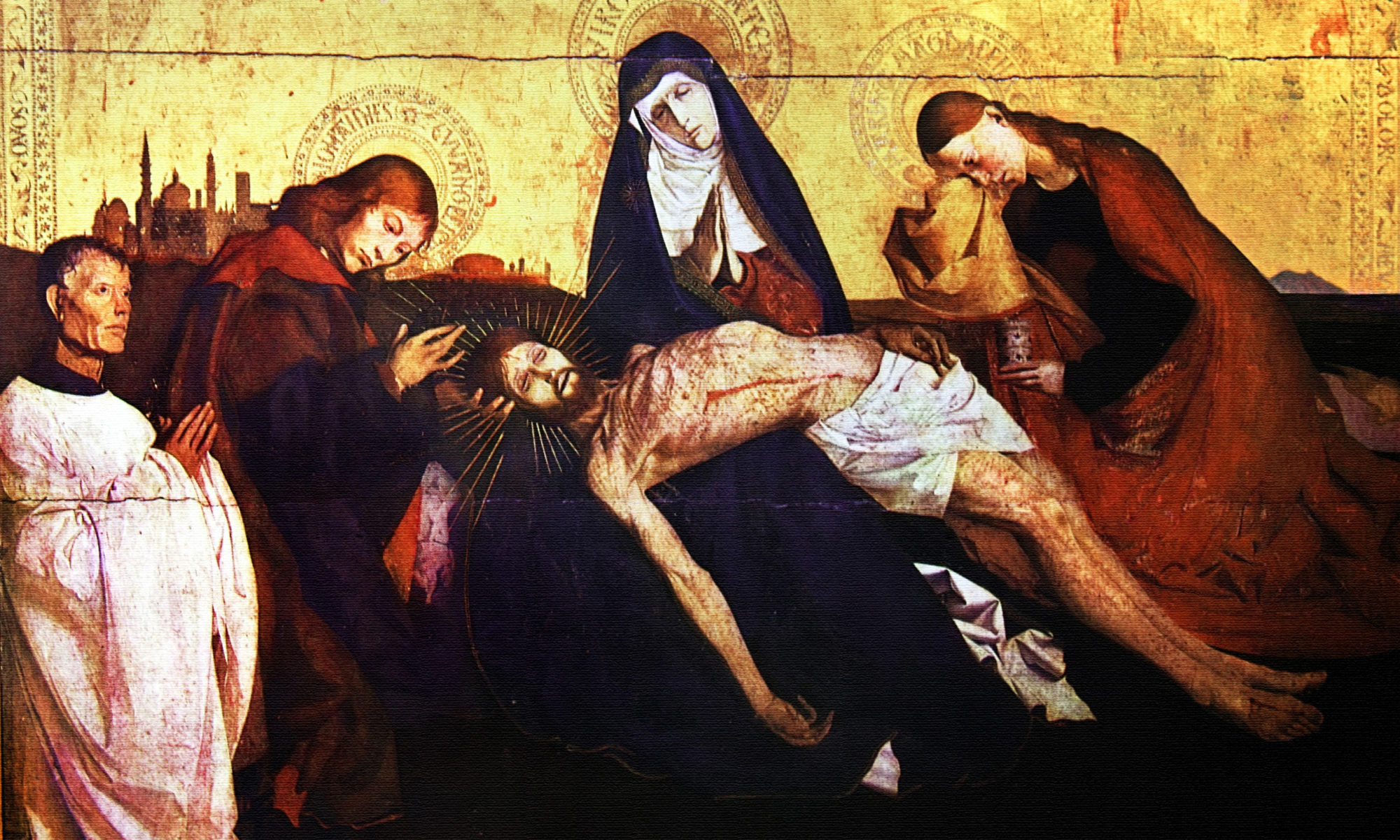The Friday of the Passion, or, Good Friday
Maundy Thursday, the day of our commemoration of the “Last Supper,” is over; The Friday of the Passion is upon us. The Friday of the Passion, the day of the suffering and death of Jesus Christ, is the most solemn day of the Holy Triduum (the last three days of Lent, consisting of Maundy Thursday, The Friday of the Passion, and Holy Saturday). In English it is called “Good Friday;” there are many theories as to the origin of this name. It commemorates the Crucifixion of our Lord, the day of salvation, when, as we Christians believe, Christ, who is perfectly good, became obedient unto death, in order to atone for the sins of all mankind.
Good Friday Liturgy
Good Friday is a day of prayer and fasting. Below is a small sampling of what the Catholic Church around the world looks like on Good Friday.
In Jerusalem
In Jerusalem, many Christian clergy and laypeople gather each year to pray and walk in procession along the Via Dolorosa, or Way of the Cross, the path which, according to legend, Jesus followed on his way to the Crucifixion. The fourteen “Stations,” where the procession stops for special prayers and meditations, are places associated with Jesus either in the Bible or in unwritten tradition. The procession along the Via Dolorosa was begun in Jerusalem by Franciscan friars. Since then, Franciscans have been walking the Way of the Cross every Friday. A live news broadcast shows many people participating in this year’s event. I could also see many Franciscan friars walking the Way of the Cross.
In the Vatican
In the Vatican, the Good Friday Mass was celebrated in St. Peter’s Basilica. Cardinal Raniero Cantalamessa, a priest and theologian of the Order of Friars Minor Capuchins, delivered the homily. Using Nietzsche as an example, Cardinal Cantalamessa explained that if God is “dead,” it is usually man himself that is enthroned in the central place formerly occupied by God. He also noted how dangerous it is to be ruled by an imperfect man rather than by God, who is perfectly good. In particular, he warned that Western countries, which have become de-Christianized, are in danger of losing their souls in the black hole of relativism and nihilism, which is the end result of atheism.
In Washington, D.C., U.S.A
At the Basilica of the Immaculate Conception in Washington, D.C., U.S.A., the liturgy was conducted by the Most Reverend Walter R. Rossi. Fr. Rossi described the history of the Way of the Cross, and talked about his favorite book of meditations on it (the one written by St. Alphonsus Liguori). He also sang two verses (in English translation) from the Stabat Mater, the traditional 14th-century chant often sung during the Way of the Cross. He also used the Virgin Mary’s grief as an analogy, referring to the grief of mothers who lost their children in violent crimes and wars. He also emphasized that the Virgin Mary is our protector. He concluded by asking the Blessed Virgin Mary to help us remain close to Christ until the end.
In Tokyo, Japan
At St. Mary’s Cathedral in Tokyo, Japan, Archbishop Isao Kikuchi said that the Lord’s Passion Day, where we find the cross of the Lord, is the starting point of our faith. He also spoke of aligning our hearts with the Passion of the Lord, who suffered for us. He encouraged us to follow the example of the Virgin Mary, who remained by the cross, and found the way to the true glory and hope that lies beyond suffering. Finally, he prayed for the Pope, for all those who serve the Church, for the victims of the earthquake in southeastern Turkey, for medical personnel, and for all those suffering from war.
Praying the Sorrowful Mysteries of the Rosary
When I pray the Rosary, I find that I have always been least fond of the Sorrowful Mysteries (usually prayed on Tuesday and Friday), which end with the death of Christ on the cross. The “realness” of the story of our Lord’s cruel treatment and execution makes me feel uncomfortable.
When I feel that way, I continue praying the rosary, while trying to focus on the thought that Christ died for love of us, and brought salvation to us all. I am a little surprised at myself, because even when I watch movies that are somewhat violent, etc., they seem fake to me, and they don’t bother me. Maybe it is the weight of my sins that I find so horrible and disgusting.
I often wonder if I am conscious enough of my sins. Am I able to think like the “good thief” who, being crucified to one side of Christ, could say to the thief on the other side, “We are receiving the due reward of our deeds” (Luke 23:41)? Our Lord tells us, “Take up your cross and follow me.” I pray that Christ will grant me the forgiveness of my sins, and the courage to carry my own cross.
Image: Reproduction of painting Pieta of Villeneuve les Avignon. The author is probably Enguerrand Quarton. 15. century, Louvre, Paris.

